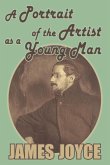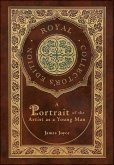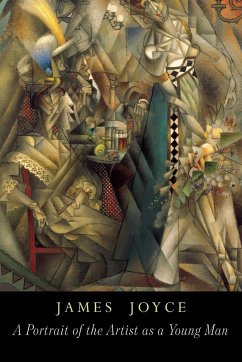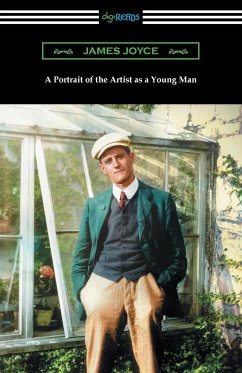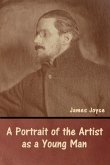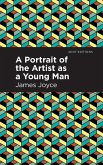Chiltern creates the most beautiful editions of the World's finest literature. Your favourite classic titles in a way you have never seen them before; the tactile layers, fine details and beautiful colours of these remarkable covers make these titles feel extra special and will look striking on any shelf. A Portrait of the Artist as a Young Man describes Stephen Dedalus's development from a bright young student to a promising clergy student to an artist. Set in Ireland at the turn of the century, It begins with his earliest childhood memories and progresses to his grand epiphany, in which he announces to his closest companions his decision to pursue art rather than a religious life. Stephen's decision results from a combination of factors: the temperament that colors his impressions of the world, his interactions with others, and his interpretation of social forces. From the start evidence indicates Stephen will be an artist. Readers first meet him as a very young child growing up in a rural community in Ireland and attending Clongowes Preparatory School. He is a timid child who doesn't socialize easily. Stephen has been bullied on the playground because of his small size and shy demeanor; when his glasses are broken following an accident, he is excused from writing exercises by his teacher. When one of his masters finds out, he beats Stephen's hands and heightens the boy's belief that his treatment by the universe is unfair. Family and friends at a Christmas dinner represent some of the differing political attitudes pervading Ireland at the time, both for and against the Irish nationalist politician Charles Stewart Parnell, and the Irish independence movement. As Stephen grows older and begins to develop love interests, he romanticizes these prominent political figures; he also fantasizes about the nature and landscape of the afterlife, encouraged by the fire-and-brimstone sermons of his schoolmasters. Both tendencies show the strong imagination of an artist. As Stephen matures, school authorities try to persuade him to join the priesthood. In many ways joining such a large institution makes sense. His family is Catholic and would see a life with the clergy as a fine vocation. The priesthood would offer stability as well; Stephen's family changes homes several times during Stephen's youth due to his father's financial irresponsibility, so a steady existence might be a relief. However, the novel shows a growing conflict between Stephen's impulse toward the priesthood and his development as an artist. Joyce offers numerous dialogues between Stephen and his friends about books and vast aesthetic and philosophical issues. These dialogues mirror Stephen's inner crisis and give insight into his psychological development. As he gets older, Stephen begins to visit prostitutes in Dublin. This habit becomes increasingly hard to reconcile with the priestly calling, and his guilt becomes more than he can bear. Gradually, Stephen comes to realize he has no zeal for the religious life and decides instead to become an artist. Joyce presents the last episodes in the book as a series of epiphanies and exchanges. Stephen sees a woman on the beach who represents, in his creatively inspired state, art itself. Later, on the streets of Dublin, Stephen encounters again a woman he loves and declares his intentions to her. As readers last glimpse the artist, he vows to forge the uncreated conscience of [his] race, or express to the world his sense of beauty and truth in the way he knows best: through art.


